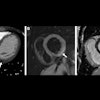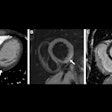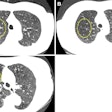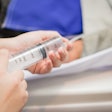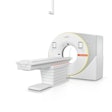Monday, December 1 | 11:50 a.m.-12:00 p.m. | SSC02-09 | Room S504AB
Stopping motion in the fast-beating heart is, of course, one of the toughest challenges in radiology, but new methods such as high-pitch CT and motion correction techniques are fueling new levels of image quality, even in patients with the highest heart rates.Several studies recommend an average heart rate of no greater than 65 beats per minute (bpm) to obtain reliable image quality in coronary CT angiography (CCTA) and the use of medications, if necessary, to control heart rate, Dr. Haruhiko Machida, from Tokyo Women's Medical University, told AuntMinnie.com.
The group tested a novel motion correction algorithm on 105 patients divided into six groups based on their average heart rate who underwent CCTA. The group tested per-vessel and per-segment image quality regarding motion artifacts.
Use of the motion correction algorithm significantly improved image quality and interpretability in all groups, providing similar or better per-vessel and per-segment interpretable quality in individuals with higher heart rates versus a control group.
"Use of a novel motion correction algorithm may increase the upper limit of heart rate to 79 bpm for use with step-and-shoot scans," improving diagnostic accuracy and interpretability, reducing the need for beta-blockers, and widening the indications for step-and-shoot scans, Machida wrote in an email.
